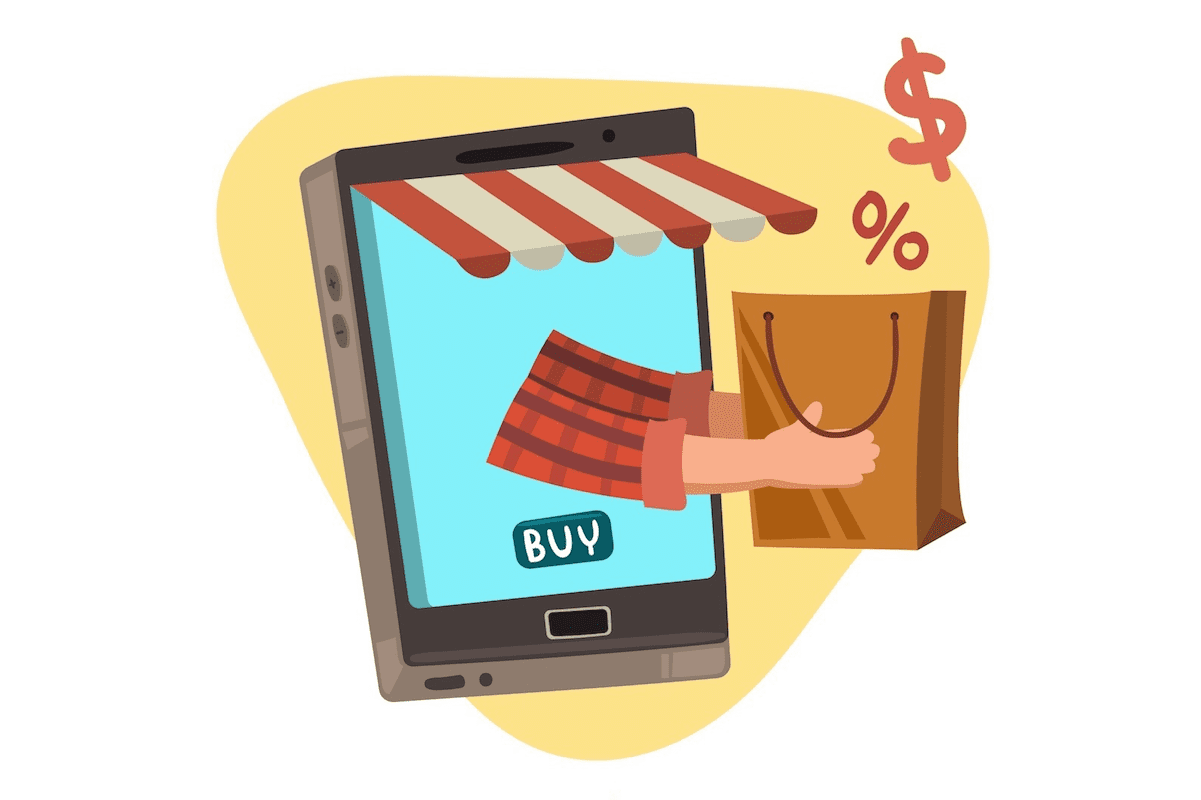
You build an ecommerce store, you optimize it for sales, you run paid ads on sites like Google and Facebook, and you get decent traffic and clicks… but your sales are still low.
So what’s wrong?
Having a fair amount of traffic and even a high click-through rate (CTR) but still having low conversions or moderate-to-low sales is an issue that many eCommerce store owners experience.
It can be frustrating when you’re doing everything right and following the “rules” of running an online store but still not seeing the results you want.
While there are some general strategies you can use to improve your conversions, the solution is first to decode your data and then find the best conversion method for your audience.
Here’s what to know about audience analysis and improving your conversions and sales.
Understanding eCommerce Conversion Rates
Before you look deeper at your traffic and CTR data, you need to know what data to compare it against.
A product sale is typically the primary conversion that should be measured, but other eCommerce conversions can include things like:
- Adding products to a cart
- Adding products to a wishlist
- Email sign-ups
- Social media shares
- Product reviews
- Any KPI you deem valuable
Whichever conversion you’re measuring, the goal should be to fall at least within your industry’s standard conversion rate or ideally higher.
To calculate your sales conversion rate, use this formula:
Conversion Rate = Total Number of Sales / Number of Unique Visitors * 100
For example, if you had 5 transactions for 40 visits (5 / 40 * 100), your conversion rate would be 12.5%.
Once you know your sales conversion rate, you can compare it against your competitors and industry benchmarks using HubSpot’s sales rate comparison tool.
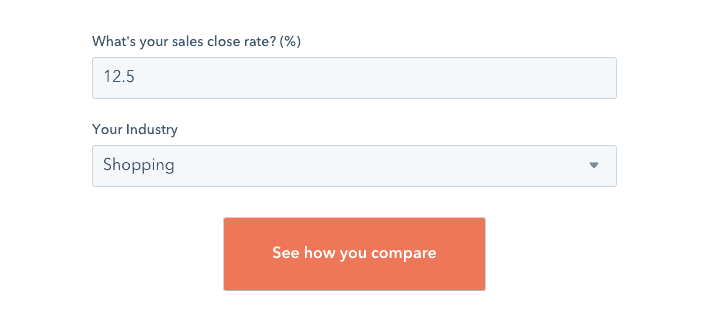
This will help you determine whether or not your conversion rate falls into the “ideal” category or if it’s too low. Of course, you could decide that an industry average conversion rate is too low for your goals, but that’s up to you.
Low Conversions but High CTR: What Now?
If you calculate your conversion rate and you realize it’s too low, especially for the amount of traffic and clicks you’re receiving from things like PPC ads and other marketing methods, the next step is to dive deeper into your data.
Google Analytics is the first place to start when analyzing conversion rates. Share on X as much of your store’s conversion information can be found there if you know where to look.
If you haven’t already, you want to set up your Google Analytics with eCommerce tracking data. This article explains how to do that. Ecommerce tracking will give you more insights about different types of conversions.

Once you have your eCommerce data tracking turned on, the next step is to look at your conversion data.
On the Google Analytics dashboard, go to to Conversions > Overview.
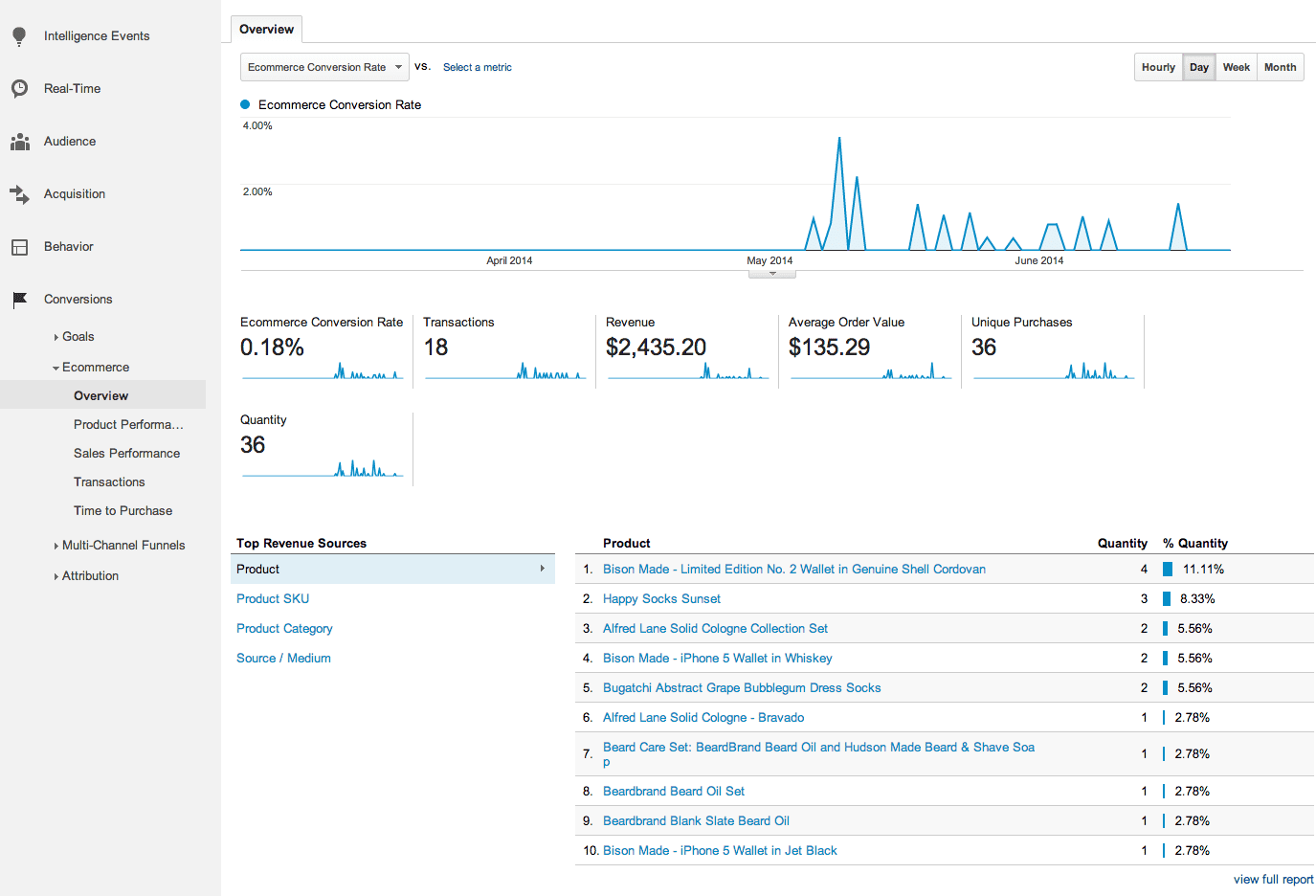
Platforms like Shopify and Magento will send information to Google Analytics (using your eCommerce tracking code), which will give you more accurate insights into your conversions comparative to your website and PPC traffic.
You should pull reports on:
- Products — This will give you data on which products were purchased, including quantity and generated revenue
- Transactions — This shows overall revenue data along with things like taxes, shipping, and more details about specific transactions
- Abandoned Cart — This will show how many users added items to their cart (which may be a conversion itself) but never completed a sale
- Time to Purchase — This will give you data on session time (time spent on a product page or landing page) and show you how long a user “browsed” before making a conversion
With this information, you should be able to see specific patterns relating to which products are selling, how long people were spending on your site before they converted, and how many site visitors were only partially converting (adding items but not buying).
You can then start optimizing your product pages and your website to increase sales conversions and improve your KPIs.
(Google Support has more information on analyzing eCommerce data here.)
Conversion Rate Optimization Strategies for eCommerce
Now that you have your data, it’s time to figure out why users aren’t converting and use conversion rate optimization (CRO) strategies to fix it.
First, it’s important to understand what makes users leave your site without converting.
According to Statista, the top reasons that users don’t convert include things like expensive shipping or unexpected shipping costs, users being too far at the top of the funnel (not ready to buy), too long of a checkout process and overall bad site navigation.
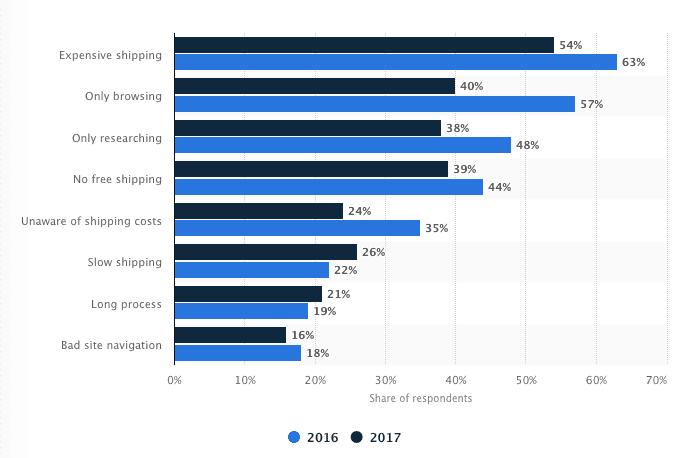
1. Address Shipping Concerns
It may or may not be possible to adjust shipping prices, though there are strategies you can use to reduce shipping costs in certain cases, like negotiating with shipping carriers, using drop shipping, or using discounted shipping supplies.
But if that’s outside of your control, or you’ve done your best to lower costs, then the next thing you can do to optimize your shipping is to keep customers informed.
Allow customers to track their packages using a tracking link or sign up for SMS notifications, for example. Or include multiple shipping options so that customers can choose to save money by having packages delivered at a different delivery time.
2. Target Middle and Bottom-of-the-Funnel Shoppers
When running PPC or social media ads, use audience targeting or Custom Audiences (Facebook) to narrow down your reach to those who are ready to buy. You can also upload your own customer data to find customers who have already purchased from you.
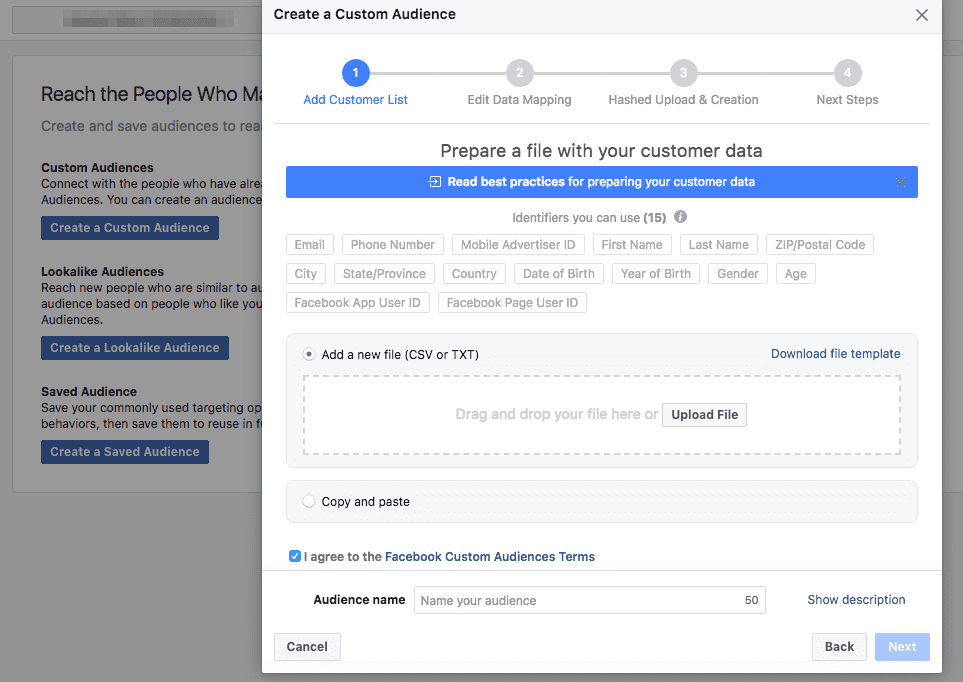
Facebook will also give you analytic data for those who have searched for terms related to your store or purchased from competitors, so you can create retargeting ads for middle-of-the-funnel shoppers.
When targeting potential customers for PPC ads, be sure to link ads back to specific product pages, and optimize those pages for conversions.
This might include adding more product images and videos, changing the color of your checkout button CTA, including more trust signals, or streamlining your product copy.
Be sure to A/B test your product pages so you can see which elements are working and which can be left alone. You may also need to drive more traffic to your site in order to properly A/B test.
3. Improve Checkout Processes
Last but not least, you want to optimize your checkout process.
Things that can streamline the checkout process include:
- Not forcing registration (allowing users to checkout as guests)
- Removing distractions or miscellaneous links from the checkout process
- Eliminating unnecessary questions from checkout forms (shortening them)
- Using optimized form design for faster checkout
- Including shipping and delivery costs up front
- Including trust signals so customers know their data is safe
By making the checkout process smoother for customers, you can eliminate or reduce any potential objections they may have when checking out, further pushing them through the funnel and ensuring higher sales.
Addressing these issues should give you a better sense of why customers are not converting.
Be sure to check your Google Analytics data after making changes so you can see if conversions are improving or if they’re staying the same (or becoming worse).
If you make changes and customers are still not buying, there may be deeper issues going on that will require further analysis.
Final Thoughts
If you’re noticing that you’re doing all the right things but still struggling with conversions, it’s important to look at your data so you know what to expect.
First, figure out your conversion rates. You might be surprised that you’re converting at the industry average, or you might find that you’re well below it (or well below your own goals for conversions).
If this is the case, the next step is to look at your data. Use Google Analytics to pull reports related to product conversions and traffic so you can identify any patterns that might give you clues to the problem.
Then, start optimizing your site for conversions. Improve your shipping pricing (if possible), target customers who are ready to buy, and make the conversion process easy to complete so you don’t lose sales at the very end.



